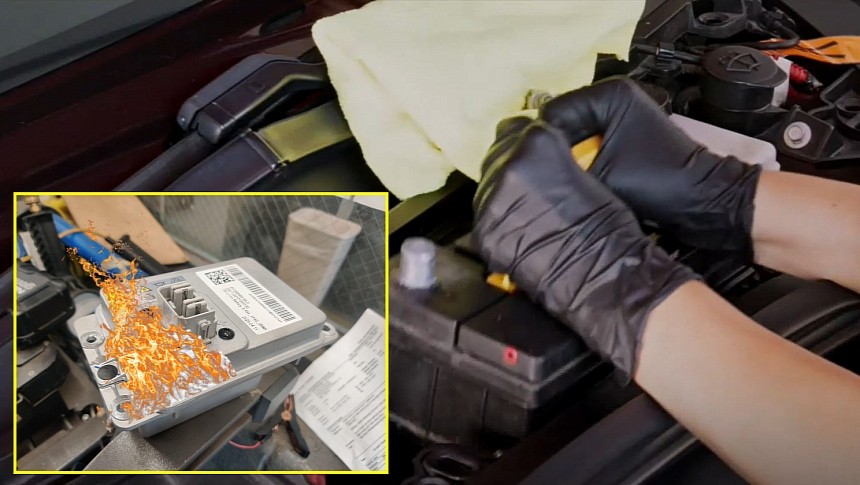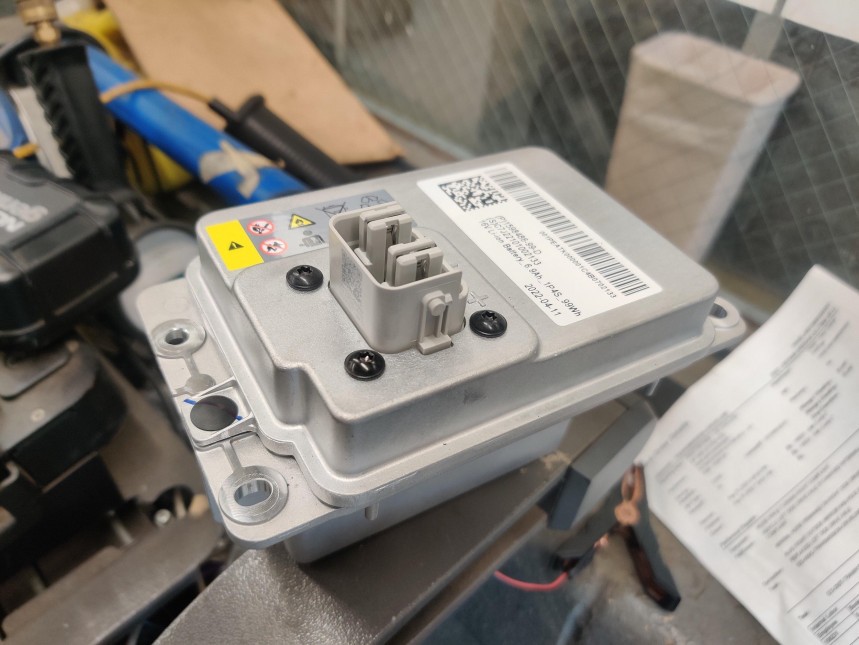A Cary, North Carolina-based Tesla owner tried to recharge the EV's low-voltage 16V Li-Ion battery. Unfortunately, they didn't abide by the manufacturer's rules, and it exploded shortly after they plugged it in. Fortunately, firefighters responded to the scene quickly and stopped a disaster from happening. However, the first responders warn other car owners that such an unwanted situation can occur with any car battery. Here's what you need to know.
Near the end of 2021, Tesla replaced the classic lead-acid 12V battery with a 16V lithium-ion (Li-Ion) low-voltage energy storage unit because the 12V batteries kept failing, leaving owners stranded or frustrated. This decision also led to weight savings and improved dependability.
With EVs, the main, high-voltage energy storage unit charges the low-voltage battery every time the system deems it necessary and optimal. But if you don't drive long distances or charge at home, the computer may decide to avoid diverting some electrons from the big battery to the small one. Since the low-voltage energy storage unit takes care of activating all the systems once you unlock the car, it can deplete unexpectedly.
Replacing a faulty 12V battery shouldn't be too tricky. However, modern cars come with advanced tech and require some specific setups. In some cases, software updates may be required.
For example, Tesla's new 16V Li-Ion batteries have an internal management system that stops them from going under-voltage if the big battery is faulty or depleted. But if you must replace a 16V battery, two software updates are required: one to allow the car to recognize the new low-voltage energy storage unit and another to have it charge correctly. Still, that's better than dealing with a car that won't open because the 12V battery failed.
The Tesla owner in question removed the 16V energy storage unit from the car and took it inside to charge it. They tried to have it replaced but weren't able to. They didn't want to wait around for a new unit or risk being stranded somewhere, even though they weren't prepared for a software change.
Sadly, the firefighters concluded that the owner didn't use the right charger. That led to a short circuit, a small explosion, and lots of heavy smoke released inside the house. The firefighters evacuated four persons from the house and stopped the low-voltage energy storage unit from potentially destroying the home.
They underlined that this could happen with any battery (including lawn mowers!) and warned people to follow the manufacturer's indications or visit an authorized shop if they have any doubts. They also said that these types of batteries (including the lead-acid ones) should never be charged inside because none of them are infallible, according to WRAL.
Tesla customers have access to a detailed owner's manual, but that type of removal and charging information isn't there. It's not even in the Do It Yourself guide. The automaker doesn't tell you how to take out the 16 Li-Ion battery properly. It just explains how to jump-start it, which, arguably, should have been enough even for this unlucky owner. They could have just revitalized the energy storage unit and left the charging to the main battery.
A Tesla account is needed to learn more about removing and charging a 16V battery. Then, you must head onto the dedicated service platform and access the relevant resources. Don't worry about the subscription. The extra manuals are free. Only technicians who want to fix Tesla independently have to pay for the proprietary diagnostic software.
At the end of the day, all this could have been avoided if Tesla had just replaced this person's 16V battery in a reasonable time frame.
With EVs, the main, high-voltage energy storage unit charges the low-voltage battery every time the system deems it necessary and optimal. But if you don't drive long distances or charge at home, the computer may decide to avoid diverting some electrons from the big battery to the small one. Since the low-voltage energy storage unit takes care of activating all the systems once you unlock the car, it can deplete unexpectedly.
Replacing a faulty 12V battery shouldn't be too tricky. However, modern cars come with advanced tech and require some specific setups. In some cases, software updates may be required.
For example, Tesla's new 16V Li-Ion batteries have an internal management system that stops them from going under-voltage if the big battery is faulty or depleted. But if you must replace a 16V battery, two software updates are required: one to allow the car to recognize the new low-voltage energy storage unit and another to have it charge correctly. Still, that's better than dealing with a car that won't open because the 12V battery failed.
The Tesla owner in question removed the 16V energy storage unit from the car and took it inside to charge it. They tried to have it replaced but weren't able to. They didn't want to wait around for a new unit or risk being stranded somewhere, even though they weren't prepared for a software change.
Sadly, the firefighters concluded that the owner didn't use the right charger. That led to a short circuit, a small explosion, and lots of heavy smoke released inside the house. The firefighters evacuated four persons from the house and stopped the low-voltage energy storage unit from potentially destroying the home.
Tesla customers have access to a detailed owner's manual, but that type of removal and charging information isn't there. It's not even in the Do It Yourself guide. The automaker doesn't tell you how to take out the 16 Li-Ion battery properly. It just explains how to jump-start it, which, arguably, should have been enough even for this unlucky owner. They could have just revitalized the energy storage unit and left the charging to the main battery.
A Tesla account is needed to learn more about removing and charging a 16V battery. Then, you must head onto the dedicated service platform and access the relevant resources. Don't worry about the subscription. The extra manuals are free. Only technicians who want to fix Tesla independently have to pay for the proprietary diagnostic software.
At the end of the day, all this could have been avoided if Tesla had just replaced this person's 16V battery in a reasonable time frame.




















